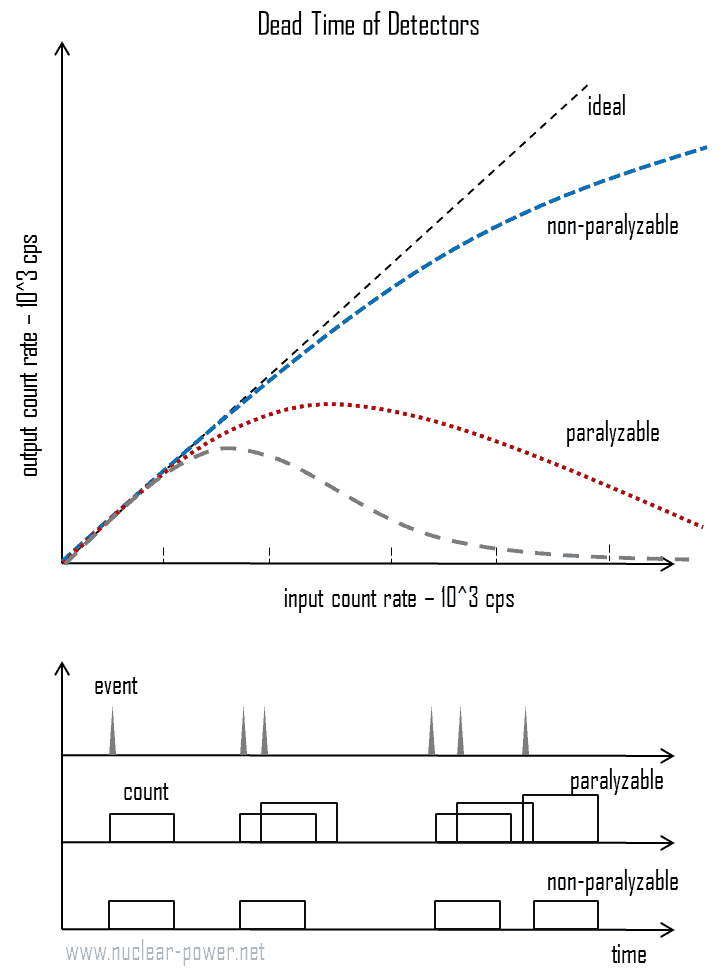
For radiation detection systems that record pulses (discrete events), the dead time is the time after each event during which the system is not able to record another event. This phenomenon is very important, for example, for Geiger counters. Because of the large avalanche induced by any ionization, a Geiger counter takes a long time (about 1 ms) to recover between successive pulses. Therefore, Geiger counters are not able to measure high radiation rates due to the “dead time” of the tube.
In other words, dead-time is the period during which the detector is busy and cannot accept and process pulses. In case of detectors of ionizing radiation, this phenomenon can have serious consequences, since dead-time distorts outputs at high activities or high dose rates. The total dead time of a detection system is usually due to the contributions of the intrinsic dead time of the detector, of the analog front end and of the data acquisition.
Paralyzable and Non-paralyzable Detector
Because of the random nature of radioactive decay, there is always some probability, that a true event will be lost, because another event is just recorded and the detector cannot accept and process more than one pulse.
There are two main dead-time characteristics of each detecting system:
- Paralyzable. In a paralyzable detector, an event happening during the dead time will not just be missed, but will restart the dead time, so that with increasing rate the detector will reach a saturation point where it will be incapable of recording any event at all.
- Non-paralyzable. In a non-paralyzable detector, an event happening during the dead time is simply lost, so that with an increasing event rate the detector will reach a saturation rate equal to the inverse of the dead time.
We hope, this article, Paralyzable and Non-paralyzable detector, helps you. If so, give us a like in the sidebar. Main purpose of this website is to help the public to learn some interesting and important information about radiation and dosimeters.